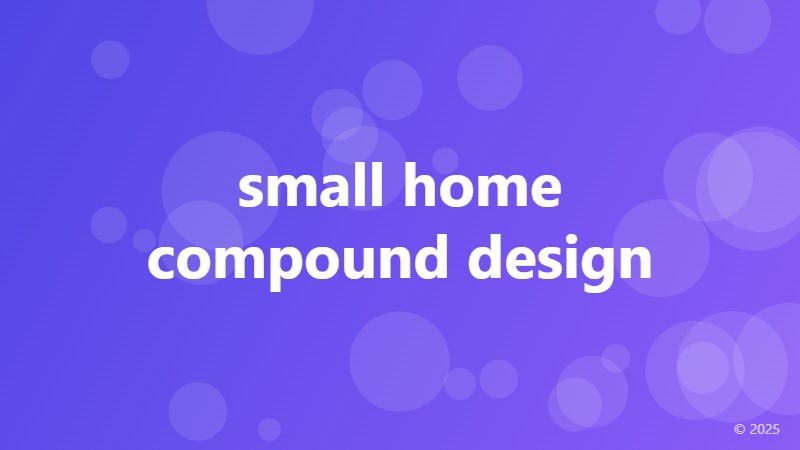small home compound design

Maximizing Space: Essential Elements of Small Home Compound Design
When it comes to designing a small home compound, every inch counts. A well-planned layout can make a significant difference in the functionality and livability of the space. In this article, we'll explore the essential elements of small home compound design that will help you create a beautiful, functional, and efficient outdoor area.
Assessing Your Space
Before you start designing your small home compound, it's essential to assess your space. Take stock of the area's dimensions, sunlight patterns, and existing features such as trees, slopes, or drainage issues. This will help you identify the most functional and aesthetically pleasing layout for your compound.
Consider the purpose of your outdoor space. Will it be used for entertainment, relaxation, or a combination of both? This will help you determine the type of features and amenities you need to include in your design.
Optimizing Layout
A well-designed layout is crucial in small home compound design. Consider the following layout principles to maximize your space:
1. Create zones: Divide your compound into different zones, such as a seating area, dining area, and play area. This will help create a sense of functionality and purpose.
2. Use curves: Curved lines and shapes can help create a sense of flow and make the space feel larger.
3. Incorporate vertical elements: Make the most of your space by incorporating vertical elements such as trellises, arbors, or climbing plants.
4. Leave space to breathe: Avoid cluttering your compound with too many features. Leave some space between each element to create a sense of breathability and relaxation.
Small but Mighty Features
Just because your compound is small doesn't mean you can't include some amazing features. Here are some small but mighty features to consider:
1. Water feature: A small water feature, such as a birdbath or fountain, can add visual interest and create a soothing atmosphere.
2. Fire pit: A fire pit can be a great addition to a small compound, providing a cozy gathering spot for family and friends.
3. Vertical garden: A vertical garden can be a great way to add some greenery to your compound without taking up too much space.
Sustainable and Low-Maintenance Design
A small home compound design should not only be aesthetically pleasing but also sustainable and low-maintenance. Here are some tips to consider:
1. Choose drought-tolerant plants: Select plants that require minimal watering and maintenance.
2. Incorporate recycled materials: Use recycled materials, such as reclaimed wood or repurposed containers, to reduce waste and add character to your compound.
3. Install energy-efficient lighting: Use energy-efficient lighting, such as solar-powered lights, to reduce your carbon footprint.
By incorporating these essential elements of small home compound design, you can create a beautiful, functional, and sustainable outdoor space that you'll love spending time in.